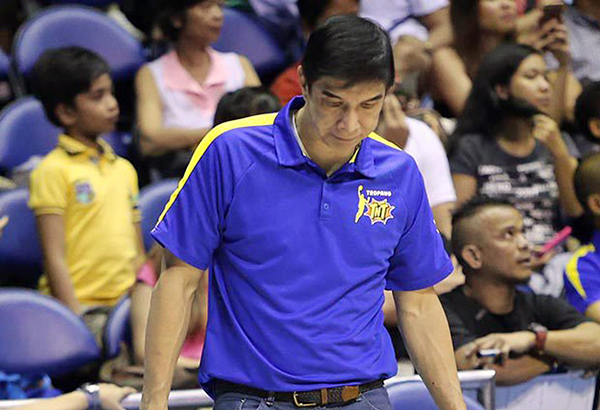FIBA sked for qualifier to be flexible

Jong Uichico
MANILA, Philippines - Gilas assistant coach Jong Uichico said yesterday the schedule of match-ups in the six home-and-away series starting November next year to determine the seven Asia/Oceania qualifiers for the 2019 FIBA World Cup will be flexible, depending on the proximity of countries involved in each tie.
Uichico said FIBA Asia will coordinate the schedule with the objective of facilitating the travel of the national teams. “It’s possible that if the Philippines is in the same bracket as Australia and New Zealand, we’ll play both countries in one swing to cover two away games,” he said. “Gilas could also host back-to-back home games. FIBA Asia will try to arrange the travel for away games in a practical way.”
National teams will pay for their trips to play away games but expenses for hotel, food and inland transportation will be for the host’s account. “There will be no bidding involved in hosting because of the home-and-away format so that’s a saving,” Uichico said. “A host country will try to generate enough income from sponsors and ticket sales to cover the cost of travel for away games.”
The home-and-away series will kick in starting November next year with five other windows in February, June, September and November in 2018 and February in 2019. The concept behind the home-and-away series is to play regular official national team games in front of home fans under the FIBA principle that “the national team is the locomotive for basketball promotion and development in each country.”
FIBA’s goal is to increase media exposure and promotion for the national team, generating benefits across the FIBA zones of Europe, the Americas, Africa and Asia/Oceania. “The new FIBA competition system and calendar from 2017 onwards opens a new era for men’s basketball all over the world, one which features 1,680 top players during 1,200 national team games and millions of fans all around the globe,” said FIBA. “It’s an opportunity for new countries and players to emerge through regular official games. There is enhanced potential for commercial and media partners to be associated with the national teams and the main FIBA competitions. The system provides all-year regular visibility of the national team, not only in the summertime, creating synergies with club competitions.”
The home-and-away series will involve 16 teams in FIBA Asia. The FIBA Asia Cup on Aug. 15-27 next year will qualify 14 of the 16 teams with two more added as “wild cards” to be determined by FIBA Asia. A draw will be held to situate the 16 teams in four separate groups of four for the home-and-away series. Two of the four groups will be for countries from the West, including Iran, Jordan, Qatar and Lebanon. The other two groups will be for countries from the East, including China, the Philippines and South Korea. Australia and New Zealand will be situated in the East. Each team will play a home-and-away series against three other teams in the same group. That means each team will play a total of six games over three series in the opening round.
The windows for the first round are in November next year and February and June in 2018. The top three finishers of each group advance to the second round which will gather 12 teams split into two groups of six. Teams will carry over the points from the first round and face another three teams in a home-and-away series. The schedule for the second round will be in September and November in 2018 and February in 2019. The top three finishers of each group will qualify for the World Cup plus the best fourth placer in either group so seven teams will make it from Asia/Oceania to China.
The qualifying tournament for the home-and-away series is the FIBA Asia Cup which is likely to be hosted by Australia and New Zealand. So far, only three countries are assured of playing in the FIBA Asia Cup – Australia and New Zealand as wildcards and Qatar for topping the Gulf Championships last September. One slot is allocated for the host nation, Central Asia (Kazakhstan, Uzbekistan, Kyrgyzstan, Turkmenistan, Tajikistan), Southeast Asia (Philippines, Thailand, Singapore, Vietnam, Malaysia, Indonesia) and South Asia (India, Bangladesh, Sri Lanka, Maldives, Pakistan, Nepal).
Four slots are set aside for East Asia (China, South Korea, Chinese-Taipei, Japan, Hong Kong, Macau, North Korea, Mongolia) and five for West Asia (Iran, Jordan, Iraq, Lebanon, Palestine, Syria).
To make it the FIBA Asia Cup and qualify for the home-and-away series leading to the FIBA World Cup, Uichico said the Philippines must win the SEABA Cup in March or April for the right to represent Southeast Asia. The PBA will still be in season during the SEABA Cup but Gilas has the pro league’s go-signal to draft two players from each club – one from the Gilas pool of 12 and another from the regular roster.
“We can’t take the SEABA Cup lightly because if we lose, we don’t play in the qualifiers for the World Cup,” said Uichico. “We don’t know how the other Southeast Asian teams are preparing. It’s unlike Gilas because we’re always in media so everybody knows what we’re doing. It’s possible that some teams will show up with a naturalized player. For us, we’ve only got Andray (Blatche) and Marcus (Douthit) to choose from. Andray will probably still be playing in the Chinese league when the SEABA Cup starts and we don’t know what shape Marcus is in.”
- Latest
- Trending


























